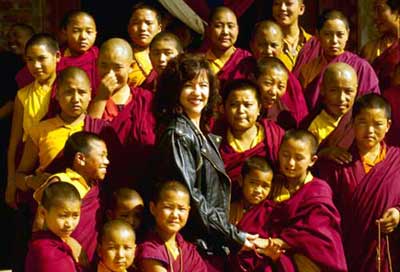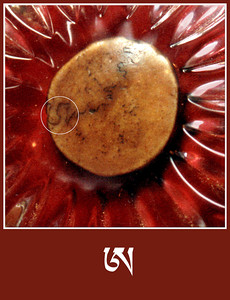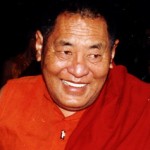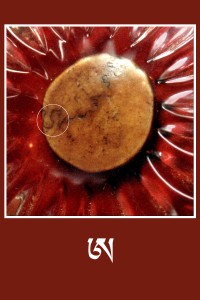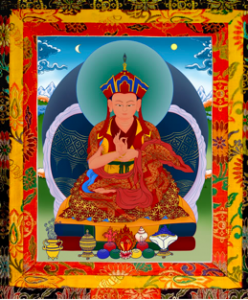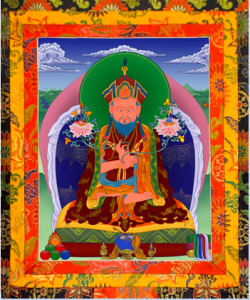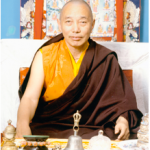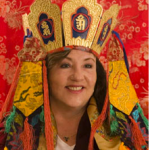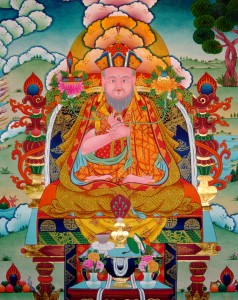
The following is an excerpt from a teaching offered by Tulku Dawa Gyalpo at Kunzang Palyul Choling in Maryland. Future posts will continue with the teaching on the Life of Migyur Dorje.
Some other prophesies happened to Tulku Migyur Dorje, saying he must go to Kham and open some sacred place, a holy place. He can’t go in [to Karma Chagme’s retreat], but he wrote a letter, asking can I go or not? Karma Chagme gave back the letter telling him, “said everything to you. Now this is your time to make decision. Please make sure that you write down whatever kind of special things happen to you and send it to me.” That’s what he said. “Please this is very important. Write down everything that happens to you during those times and bring those letters to me” is how he collected all the letters even after Tulku Migyur Dorje was not with him.
After that, Tulku Migyur Dorje started to teach again, giving empowerment and giving those instructions again. Many different monasteries invited him and requested him to teach, give empowerment, instructions. He went to so many different monasteries. I have the name of one monastery, [Tibetan name]. He went back to Kathog monastery. Also he went to some Kagyu monasteries; Kagyu monks, Sakya monks, even the Bon practitioners were inspired by him. They also requested teaching from him. He all gave empowerment, teaching, instruction, and everything to whoever requested it. Then, especially in that monastery, [Tibetan name], he did the one sadhana that we do in Namdroling, the eight day Drupchen, the great sadhana, that all the monks together continuously recite mantras day and night. He did it in accordance with Sky Treasure [Tibetan]: the collection of one hundred thousand MANI mantra and also [Tibetan] the sadhana of reciting one hundred thousand MANI and another sadhana called Do Drup, kind of like mendrup. We make this medicine. Medicines are actually made this way. It is a blessing, not just collecting all the herbs. After collecting all the herbs, then we make sure everything is balanced. After that, we do sadhana. Also during the sadhana, there has to be some sign of accomplishment. Otherwise, we won’t use this mendrup. Our late Holiness also used to do that in Namdroling. After Tulku Migyur Dorje was nineteen, he did that in that monastery particularly. In those eight days, so many signs appeared as the success of this mendrup. They made pills and they had the signs of kind of flying up. This was not something just seen by him, but by everybody in the mandala. There were other signs like very sweet scent pervading all around the mandala, and also some sounds came up, and those small pills increased. There were common signs like rainbows and flowers raining down. The signs continuously happened until the sadhana was finished.
After that, he gave all these special teachings that we are practicing during our summer retreat. He started giving those teachings then. At that time, our first lineage holder, Kunzang Sherab was there, and also many others. I think it is important that we know he was there because that was when our lineage started. There were many other disciples as well, not just him. Then Tulku Migyur Dorje started to give the Ngondro, and the togyal and the threkchod teachings that we practice every summer. Also the tummo. He gave all these dzogchen teachings from Ngondro to the threkchod togyal two times. During those two times, Kunzang Sherab was there; and he gave the tummo teaching which we practice many times. During that time also, Kunzang Sherab was there, receiving all this teaching from him. Likewise he gave the P’howa which we do to many people. If somebody asked him to do P’howa for their dead person, he did it for them. He gave teaching so people could practice P’howa as we continue to do today. These same practices that we are doing today started then. He traveled and gave these teachings.
At that same time, he opened some important sacred places as well. He gave the introduction. The sacred palace opening already existed there, but people like Tulku Migyur Dorje introduced the place, told who came there before, what blessing they gave, and what retreat to do there. These are the places where if you do retreat, there is more potential. He opened that kind of sacred place. Through that and by giving teaching, he got so much wealth and money and so forth. All of the things that were given to Tulku Migyur Dorje, he just gave or used for the purpose of the Dharma. He didn’t keep anything for himself. What it says literally here is whatever he got he used right away. He purely used everything for the sake of Dharma.
Our late Holiness was also like that. Whatever he got, he spent for the Dharma. He didn’t waste any money. Therefore it becomes worthwhile to offer. Your offering is not going to be misused.
